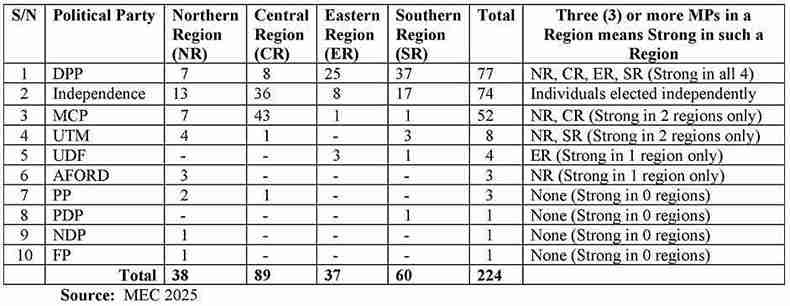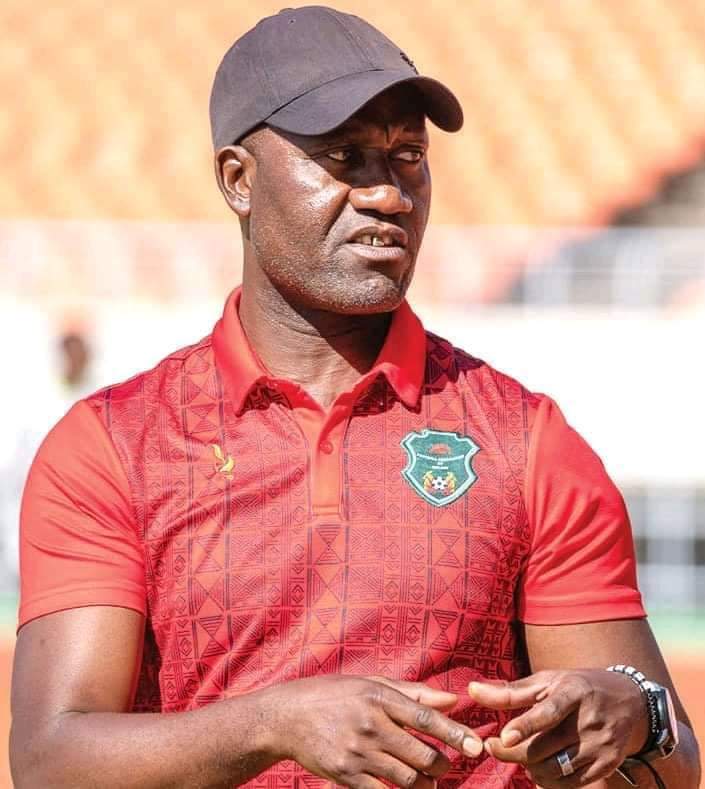By Suleman Chitera
Malawi’s 2025 Tripartite Election has reshaped the country’s political landscape, with regional political party strength and parliamentary representation defining the balance of power. According to the latest parliamentary seat distribution, the Democratic Progressive Party (DPP) has emerged as the clear national powerhouse, while independents and regional parties continue to play influential roles.
Criterion for Political Strength by Region
A political party is considered regionally strong if it secures three or more parliamentary seats in a particular region. This measure highlights both broad-based national parties and regionally rooted movements that continue to shape Malawi’s democracy.
Truth About Fuel Price Increase: MCP Cabinet Approved It, Not DPP
Dominance of the Democratic Progressive Party (DPP)
The Democratic Progressive Party (DPP), led by Professor Arthur Peter Mutharika, has cemented its dominance in 2025. The party holds 77 parliamentary seats across all four regions, making it the most influential political force in Malawi today:
Northern Region: 7 seats
Central Region: 8 seats
Eastern Region: 25 seats
Southern Region: 37 seats
This widespread distribution demonstrates the DPP’s national appeal and organizational strength, reminiscent of its sweeping victory in 2009 under the late Professor Bingu Wa Mutharika.
Ntanyiwa alleges MCP is planning to kill him and BMTV
Strong Presence of Independent Candidates
Independents remain a formidable bloc in Parliament, winning seats in every region:
Northern Region: 13 seats
Central Region: 36 seats
Eastern Region: 8 seats
Southern Region: 17 seats
Their broad representation underscores the growing appeal of community-driven and non-partisan politics, often reflecting local grievances and candidate personalities rather than party loyalty.
Regional Bases of Other Political Parties
Malawi Congress Party (MCP): Strongest in the Central Region (43 seats) and Northern Region (7 seats), but weak in the Eastern and Southern Regions (1 seat each).
United Transformation Movement (UTM): Has relative strength in the Northern and Southern Regions, though weak in the Central and Eastern Regions.
United Democratic Front (UDF): Influence is now limited exclusively to the Eastern Region.
Alliance for Democracy (AFORD): Maintains a loyal base, dominant only in the Northern Region.
Ndanga claims MCP ministers privately congratulating Mutharika
Status of Smaller Political Parties
Parties such as the People’s Party (PP), People’s Democratic Party (PDP), National Democratic Party (NDP), and Freedom Party remain largely personalist outfits. With no serious structures or regional footholds, their role in the 2025 elections was minimal. In fact, some were allegedly used by the MCP in an attempt to divide the DPP vote in the Southern Region—a strategy that failed to yield results.
Leadership and Political Continuity
Under the leadership of Professor Arthur Peter Mutharika, the DPP has expanded its authority in 2025, firmly positioning itself as Malawi’s foremost political powerhouse. The party’s dominance mirrors the 2009 era of Professor Bingu Wa Mutharika, marking a strong return of the Mutharika political dynasty in shaping Malawi’s governance.
Conclusion
The 2025 Tripartite Election highlights a resurgent DPP, the resilience of independent candidates, and the regional nature of Malawi’s politics. While smaller parties fade into the background, the competition between national heavyweights and independent movements will define the next phase of Malawi’s democratic journey.




